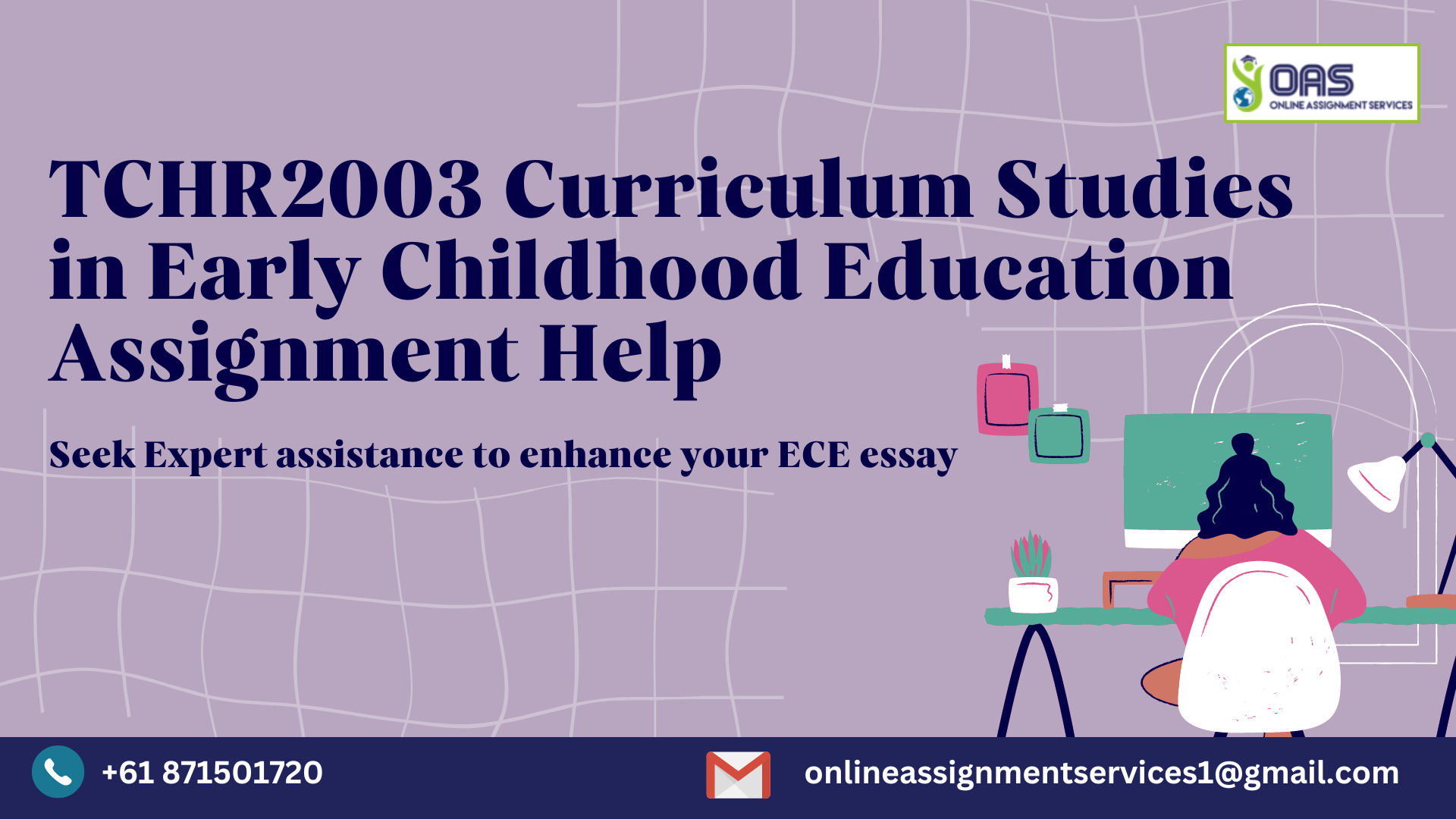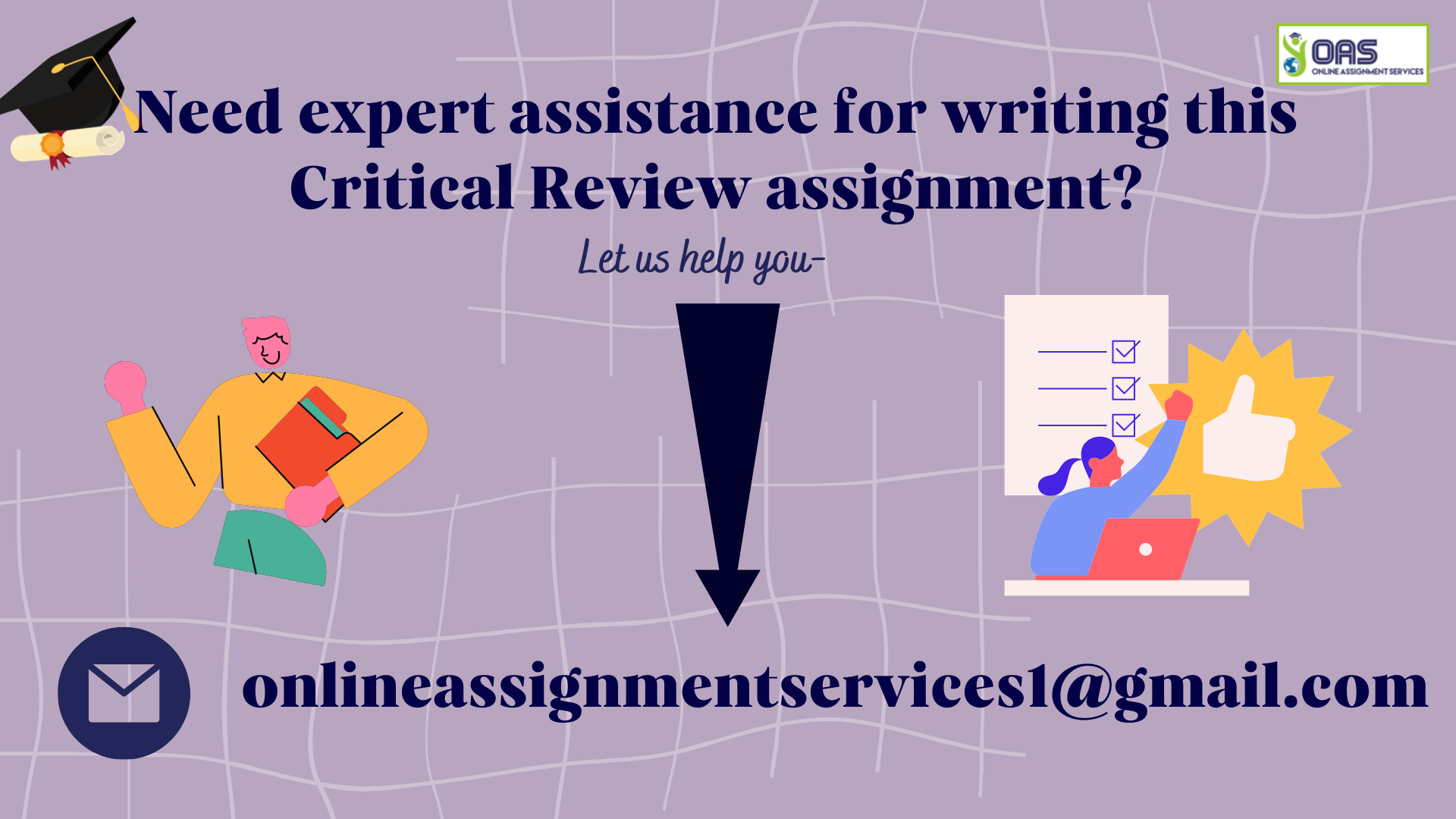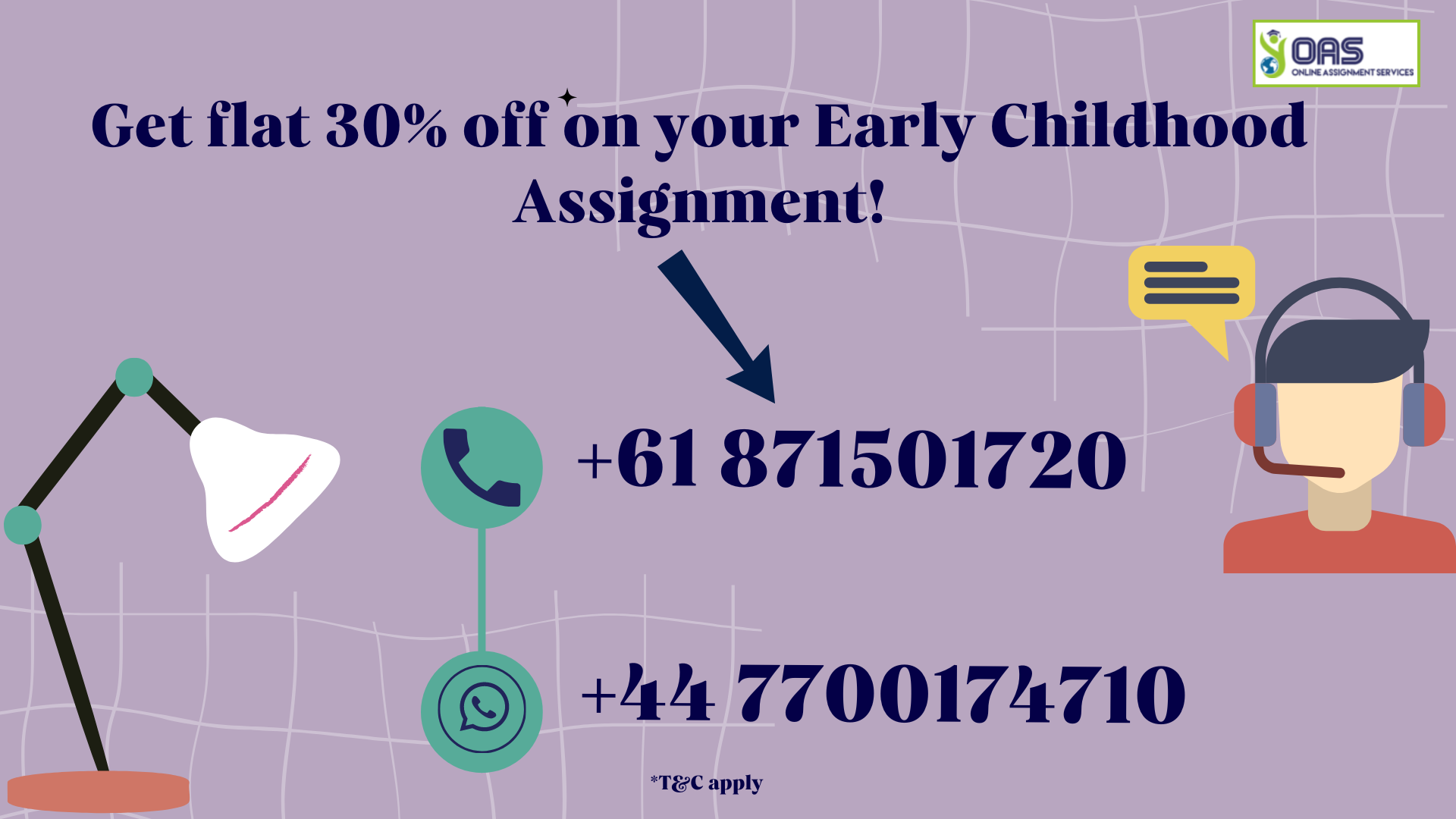TCHR2003: Curriculum Studies in Early Childhood Education Critical Review Assignment Help
 Question
Question
TCHR2003: This is a Southern Cross University Assignment for the Curriculum Studies in Early Childhood Education course which demands the students to demonstrate their understanding of the EC curricular structure through this critical analysis assignment. Three points are provided in the assessment file for this task, for which the student is supposed to provide a critical analysis of the respective arguments. This provides the students with an opportunity to demonstrate their learning related to the Early Childhood Curriculum Framework and the use of play in lesson planning.
Solution
In providing Critical Review Assignment Help for Students in Australia, our experts ensure that a high-quality solution is evidenced by relevant and credible articles provided to our students. Here, it has been remarked by our experts that it is critical for early childhood educators to understand the Early Childhood Curriculum Framework and be able to defend the use of play in lesson planning.
Question 1
In writing the answer to this question, our experts have discussed the early childhood education program in detail. In providing our Cross University Assignment Help, our experts have also presented evidence to support the arguments presented here from the unit’s content references.
A learning and development plan called a curriculum is created specifically to fulfill the needs of young children in early childhood education (Millei, & Jones, 2014). It is a framework that instructs educators on how to give students opportunities to learn and develop in all facets of their lives. A learning strategy called a curriculum aims to give kids the knowledge, abilities, and attitudes they need to succeed. The Early Years Learning Framework (EYLF), which should be followed, calls for play-based, child-centered early childhood education. Strong belief in identity, connectedness, wellness, confidence, and good communication are the five learning outcomes listed in the EYLF. The curriculum ought to be adaptable, personalized for each student, and developmentally appropriate (Brown et al., 2022).
If you are stuck with your ECE assignment and looking for Critical Review Assignment Help for Students in Australia, Mail us at onlineassignmentservices1@gmail.com.
Question 2
Here, our experts have discussed the ways that young children in early childhood education pick up curriculum through play. These ways have been justified by utilizing NQS, theoretical, and EYLF citations by our experts.
Early childhood educators teach their students through play, which is consistent with Jean Piaget’s theories on child development, which placed emphasis on the value of nurturing imaginative and creative thinking. EYLF which acknowledges that each child’s learning journey is distinct and non-linear, is consistent with this strategy (Piaget & Cook, 1952). In early childhood education, children learn the subject matter through play because it encourages a natural and interesting learning process. Young children explore the environment, make meaning of their experiences, and acquire critical abilities and information mostly through playing in early childhood education via constant peer interaction, psychological involvement, and critical thinking. The EYLF (DET, 2019) mandates guided learning, which educators can incorporate into the curriculum while maintaining the children’s attention through the use of learning-through-play activities. Along with teaching them important skills like inquiry, communication, experimenting, and teamwork, the play gives the kids a rich experience as well as creates fond memories through collaboration and a sense of community building (Smith et al., 2019). The educator must support children’s independence during play and give them the opportunity to effectively develop their skills as has been mentioned in NQS. The following examples show how play helps kids learn the curriculum.
We provide the Best Early Childhood Assignment Help in South Wales. Don’t believe us? WhatsApp us at +447700174710 to get in touch with our subject matter experts.
 Question 3
Question 3
In this question, the student is supposed to observe the teacher and kids communicate and engage in activities while viewing the video on the Blackboard website. This question comprises the following sub-questions:
Part a
First, the EYLF Learning Outcomes that the kids are acquiring, according to AGDE, 2022 have been discussed in this section.
EYLF objectives that the kids are learning based on the activities have been mentioned in the following response:
LO1 Strong Sense of Identity
During the learning identity exercises, the kids learn to express their feelings and emotions along with making decisions (Krieg, 2011). They can express their tastes and opinions by, for instance, choosing multiple components for the game that they are playing.
LO2 Connectivity to and Contribution to Their World
Both indoor and outdoor group activities encourage youngsters to have a sense of partnership and connection with one another and their environment (Cohrssen, 2021). While assembling an interactive game like Lego, they will learn to collaborate to identify various Lego components, and their shapes and gain knowledge about the suitable use of the components.
Were you searching for Curriculum Studies in Early Childhood Education Assignment Help in Australia? You are at the right place! Call us today at +61 871501720.
Part b
In providing TCHR2003 Critical Review Assignment Help in this section, our experts have discussed the EYLF Practices and Principles and NQS Quality Areas that the teacher is utilizing to encourage the learning of the students.
In order to encourage children’s learning, the educator in the movie makes use of a variety of EYLF Practices and Principles as well as NQS Quality Areas (ACECQA, 2018; DET, 2019).
EYLF Principles
Relationships: Secure, trusting, and reciprocal relationships are fostered by the teacher so that the students feel at ease talking to her and with one another. For example, by listening to a young kid’s fear of monsters the teacher can build a relation of trust.
Looking to Order Graduate Diploma of Education Assignment Help? Reach out to us at onlineassignmentservices1@gmail.com and get Southern Cross University Assignment Help at a flat 20% off.
Part c
Lastly, the three Australian Curriculum Learning Areas that this event might be covering are discussed here. While providing Early Childhood Assignment Help in this solution, our experts have ensured that all the arguments presented here are supported by relevant examples.
Arts: The young children’s sense of community and cooperation is fostered through arts especially during group activities, helping them develop a sense of connectedness to the outside world (Australian Curriculum, 2023).
Technology: By making sure the kids are following a systematic approach while participating in the technological activity, the instructor helps them develop a strong sense of evaluation and well-being (Australian Curriculum, 2023).
Science: In order to encourage confidence and experimental involvement in their learning, the teacher actively involves the students in scientific activities by posing questions and encouraging active participation in recognizing variables and patterns (Australian Curriculum, 2023).
Are you a student at SCU and need Early Childhood Assignment Help in South Wales? Let us assist you! WhatsApp us at +447700174710 today!

